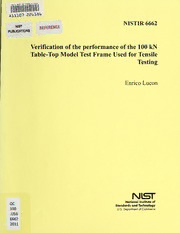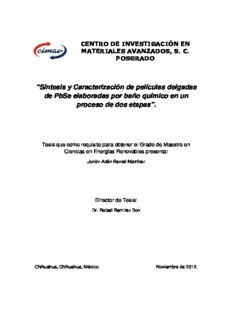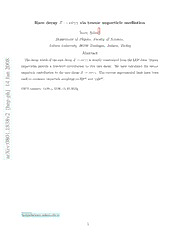
Rare decay Z \to ν\barνγγvia tensor unparticle mediation PDF
Preview Rare decay Z \to ν\barνγγvia tensor unparticle mediation
Rare decay Z → νν¯γγ via tensor unparticle mediation I˙nanc¸ S¸ahin∗ Department of Physics, Faculty of Sciences, Ankara University, 06100 Tandogan, Ankara, Turkey Abstract 8 The decay width of the rare decay Z → νν¯γγ is strictly constrained from the LEP data. Tensor 0 0 unparticles provide a tree-level contribution to this rare decay. We have calculated the tensor 2 n unparticle contribution to the rare decay Z → νν¯γγ. The current experimental limit have been a J used to constrain unparticle couplings νν¯ZUµν and γγUµν. 4 1 PACS numbers: 14.80.-j, 12.90.+b,13.38.Dg ] h p - p e h [ 2 v 8 3 8 1 . 1 0 8 0 : v i X r a ∗ isahin@science.ankara.edu.tr 1 I. INTRODUCTION Scale invariance plays a crucial role in theoretical physics. A possible scale invariant hidden sector that may interact weakly with the Standard Model (SM) fields is being dis- cussed intensively in the literature. Based on a scale invariant theory by Banks-Zaks (BZ) [1], Georgi proposed a new scenario [2, 3] in which SM fields and a scale invariant sector described by (BZ) fields interact via the exchange of particles with a large mass scale M . U Below this large mass scale interactions between SM fields and BZ fields are described by non-renormalizable couplings suppressed by powers of M [2, 4]: U 1 O O (1) MdSM+dBZ−4 SM BZ U The renormalization effects in the scale invariant BZ sector then produce dimensional trans- mutation at an energy scale Λ [5]. In the effective theory below the scale Λ , the BZ U U operators are embedded as unparticle operators. The operator (1) match onto the following form, ΛdBZ−dU C U O O (2) OUMdSM+dBZ−4 SM U U here, d is the scale dimension of the unparticle operator O and the constant C is a U U OU coefficient function. Phenomenological [6], astrophysical and cosmological [7] implications of unparticles have been intensively studied in the literature. In the some of these phenomenological researches several unparticle production processes have been considered. A possible evidence for this scale invariant sector might be a missing energy signature. It can be tested experimentally by examining missing energydistributions. Another evidence forunparticles canbeexplored by studying its virtual effects. In this work we will present a detailed calculation of tensor unparticle contribution to the rare decay Z → νν¯γγ. Experimental results from LEP data [8] strictly constrains the decay width at 95% confidence level: BR(Z → νν¯γγ) ≤ 3.1×10−6 (3) 2 This experimental limit will be used to constrain unparticle couplings νν¯ZUµν and γγUµν. II. THE RARE DECAY Z → νν¯γγ Z → νν¯γγ decay may occur via tensor unparticle exchange Fig.1. We consider the following effective interaction terms: 1 λ ¯ µν − ψi(γ D +γ D )ψO (4) 4ΛdU µ ν ν µ U U κ G GαOµν (5) ΛdU µα ν U U where D = ∂ +igτaWa +ig′Y B is the covariant derivative, Gαβ denotes the gauge field µ µ 2 µ 2 µ strength, ψ is the Standard Model fermion doublet or singlet, λ and κ are dimensionless effective couplings. Feynman rules for these operators have been given in ref.[4]. The vertex functions for νν¯ZUµν and γ(p )γ(p )Uµν generated from operators (4) and (5) are given by, 1 2 ig λ Γµνα = [γµgνα +γνgµα] (6) (νν¯ZU) 4cosθ ΛdU W U iκ Γµνρσ = [Kµνρσ −Kµνσρ] (7) (γγU) ΛdU U Kµνρσ = −gµνpρpσ −(p ·p )gρµgσν +pνpρgσµ +pµpρgσν 1 2 1 2 1 2 2 1 respectively. Spin-2 unparticle propagator is defined by [4]: A ∆(P2) = i dU (−P2)dU−2T (P) (8) µν,ρσ µν,ρσ 2sin(d π) U where, A = 16π52 Γ(dU + 21) (9) dU (2π)2dU Γ(d −1)Γ(2d ) U U P P µ ν π (P) = −g + (10) µν µν P2 3 1 2 T (P) = π (P)π (P)+π (P)π (P)− π (P)π (P) (11) µν,ρσ µρ νσ µσ νρ µν ρσ 2 (cid:20) 3 (cid:21) The decay width can then be written as S 1 d3p d3p d3k d3k Γ(Z → νν¯γγ) = |M¯|2δ4(Q−p −p −k −k ) 1 2 1 2 (12) 25m (2π)8 Z 1 2 1 2 p0 p0 k0 k0 Z 1 2 1 2 where S = 1/2! is the statistical factor for identical photons and momentum 4-vectors of the participating particles are denoted as Z(Q) → ν(p )ν¯(p )γ(k )γ(k ). By applying Feynman 1 2 1 2 rules we can obtain polarization summed squared amplitude. It is given by g2A2 λ 2 κ 2 |M¯|2 = dU |(k +k )2|2dU−4Θ pµpν (13) m2 cos2θ sin2(d π) (cid:18)ΛdU(cid:19) (cid:18)ΛdU(cid:19) 1 2 µν 1 2 Z W U U U where we have introduced the definition Θ = (k ·k )m2 +2(k ·Q)(k ·Q) (k k +k k ) (14) µν 1 2 Z 1 2 1ν 2µ 1µ 2ν (cid:2) (cid:3) In amplitude (13) we have assumed the lepton universality and a factor of 3 has been taken into account for alloftheknown neutrino species. Integrationoverp andp canbeprovided 1 2 with the aid of the following identity [9]: d3p d3p π Iµν = 1 2δ4(V −p −p )pµpν = V2gµν +2VµVν (15) Z p0 p0 1 2 1 2 6 1 2 (cid:0) (cid:1) Here V = Q−k −k . Then the decay width is reduced to the following: 1 2 1 g2A2 λ 2 κ 2 Γ(Z → νν¯γγ) = dU (16) 3×215π7m3 cos2θ sin2(d π) (cid:18)ΛdU(cid:19) (cid:18)ΛdU(cid:19) Z W U U U d3k d3k × 1 2|(k +k )2|2dU−4Θ V2gµν +2VµVν Z k0 k0 1 2 µν 1 2 (cid:0) (cid:1) There still remains the integrations over k and k . These integrations can be carried out 1 2 numerically. We will work in the center of mass system of the Z boson. We choose the following integration variables: 4 2Q·k 2k0 2Q·k 2k0 (1−cosθ) ξ = 1 = 1, η = 2 = 2, ω = (17) m2 m m2 m 2 Z Z Z Z where θ is the angle between two outgoing photons. Then the decay width can be written as 2 2 λ κ Γ(Z → νν¯γγ) = F(d ) (18) (cid:18)ΛdU(cid:19) (cid:18)ΛdU(cid:19) U U U where, m4dU+1 g2A2 F(d ) = Z dU (19) U 3×216π5cos2θ sin2(d π) W U × ξ3η3|ξηω|2dU−4(1+ω)[ω(1+ξηω−ξ −η)+(1−ηω)(1−ξω)]dξdηdω Z Ω The integration region Ω is given by [9, 10]: 0 ≤ ω ≤ 1 when 0 ≤ ξ ≤ 1−η (20) ξ +η −1 ≤ ω ≤ 1 when 1−η ≤ ξ ≤ 1 (21) ξη together with 0 ≤ η ≤ 1. Numerical integrations have been performed by a Monte Carlo routine. During numerical integrations we impose a cut |cosθ| < 0.98. From current experimental limit (3) on the rare decay Z → νν¯γγ we set the following bound: 2 2 λ κ F(d ) ≤ 7.73512×10−6 (22) (cid:18)ΛdU(cid:19) (cid:18)ΛdU(cid:19) U U U This expression gives us the allowed region in the λ2 versus κ2 plane. In Fig.2, we plot Λ2UdU Λ2UdU the boundary lines of scaled unparticle couplings λ2 and κ2 for various values of the Λ2dU Λ2dU U U scale dimension d . Allowed regions are defined by the area restricted by these boundary U lines. In principle, unparticle couplings κ and λ can be different. If we assume κ = λ, we can obtain a unique bound on λ for each value of the scale dimension. The bounds on scaled unparticle couplings | λ | are given on Table I. ΛdUU 5 III. CONCLUSION One can see from Fig.2 that allowed area decreases in size as d increases. This feature U is reflected in the Table I also. For instance, bound on | λ | decreases by a factor of 11.9 as ΛdUU d increases from 1.01 to 1.99 (Table I). This behavior is clear from factor 1 in the U sin2(dUπ) squared amplitude (13). ¯ Tensor unparticle interactions (4) and (5) also contribute to the rare decay Z → ℓℓγγ. Experimental limit on this rare decay is at the same order O(10−6) as Z → νν¯γγ decay. Therefore this experimental limit can also be used to constrain tensor unparticle couplings. ¯ The difference is that the decay Z → ℓℓγγ receives Standard Model tree-level contributions but Z → νν¯γγ decay does not. [1] T. Banks and A. Zaks, Nucl. Phys. B196, 189 (1982). [2] H. Georgi, Phys. Rev. Lett. 98, 221601 (2007). [3] H. Georgi, Phys. Lett. B650, 275 (2007). [4] K. Cheung, W.-Y. Keung and T.-C. Yuan, Phys. Rev. D76, 055003 (2007). [5] S. Coleman and E. Weinberg, Phys. Rev. D7, 1888 (1973). [6] K. Cheung, W.-Y. Keung and T.-C. Yuan, Phys. Rev. Lett. 99, 051803 (2007); M. Luo and G. Zhu, arXiv:0704.3532 [hep-ph]; C.H. Chen and C. Q. Geng, arXiv:0705.0689 [hep-ph]; Y. Liao, arXiv:0705.0837 [hep-ph]; G.J. Ding and M.L. Yan, arXiv:0705.0794 [hep-ph]; T.M. Aliev, A.S. Cornell and N. Gaur, arXiv:0705.1326 [hep-ph]; X.Q.Li and Z.T. Wei, Phys. Lett. B651, 380 (2007); M.A. Stephanov, Phys. Rev. D76,035008 (2007); N. Greiner, arXiv:0705.3518 [hep-ph]; S.L. Chen and X.G. He, Phys. Rev. D76, 091702 (2007); T.M. Aliev, A.S. Cornell and N. Gaur, JHEP 0707, (2007); P. Mathews and V. Ravindran, arXiv:0705.4599 [hep-ph]; S. Zhou, arXiv:0706.0302 [hep-ph]; 6 G.J. Ding and M.L. Yan, arXiv:0706.0325 [hep-ph]; C.H. Chen and C.Q. Geng, arXiv:0706.0850 [hep-ph]; M. Bander, J.L. Feng, A. Rajaraman and Y. Shirman, arXiv:0706.2677 [hep-ph]; T.G. Rizzo, arXiv:0706.3025 [hep-ph]; S.L. Chen, X.G. He and H.C. Tsai, JHEP 11, 010 (2007); R. Zwicky, arXiv:0707.0677 [hep-ph]; T. Kikuchi and N. Okada, arXiv:0707.0893 [hep-ph]; R. Mohanta and A.K. Giri, arXiv:0707.1234 [hep-ph]; C.S. Huang and X.H. Wu, arXiv:0707.1268 [hep-ph]; N.V. Krasnikov, arXiv:0707.1419 [hep-ph]; A. Lenz, arXiv:0707.1535 [hep-ph]; D. Choudhury and D.K. Ghosh, arXiv:0707.2074 [hep-ph]; A. Delgado, J. R. Espinosa and M. Quiros, arXiv:0707.4309 [hep-ph]; M. Neubert, arXiv:0708.0036 [hep-ph]; G. Bhattacharyya, D. Choudhury and D.K. Ghosh, arXiv:0708.2835 [hep-ph]; Y. Liao, arXiv:0708.3327 [hep-ph]; A. T. Alan and N. K. Pak, arXiv:0708.3802 [hep-ph]; S. Majhi, arXiv:0709.1960 [hep-ph]; A. Kobakhidze, Phys. Rev. D 76, 097701 (2007); A. B. Balantekin and K. O. Ozansoy, arXiv:0710.0028 [hep-ph]; A. T. Alan, N. K. Pak and A. Senol, arXiv:0710.4239 [hep-ph]; O. Cakir, K. O. Ozansoy, arXiv:0710.5773 [hep-ph]; K. Cheung, C. S. Li and T.-C. Yuan, arXiv:0711.3361 [hep-ph]; R. Mohanta and A.K. Giri, arXiv:0711.3516 [hep-ph]; K. Huitu and S. K. Rai, arXiv:0711.4754 [hep-ph]; O. Cakir, K. O. Ozansoy, arXiv:0712.3814 [hep-ph]; Y. Wu and D.-X. Zhang, arXiv:0712.3923 [hep-ph]; T. Kikuchi, N. Okada and M. Takeuchi, arXiv:0801.0018 [hep-ph]; X.-G. He and S. Pakvasa, arXiv:0801.0189 [hep-ph]; C.-H.Chen, C. S. Kim and Y. W. Yoon, arXiv:0801.0895 [hep-ph]; J. L. Feng, A. Rajaraman and H. Tu, arXiv:0801.1534 [hep-ph]. 7 [7] H. Davoudiasl, arXiv:0705.3636 [hep-ph]; A. Freitas and D. Wyler, JHEP 12, 033 (2007); S. Hannestad, G. Raffelt and Yvonne Y. Y. Wong, arXiv:0708.1404v1 [hep-ph]; P. K. Das, arXiv:0708.2812v2 [hep-ph]; L. Anchordoqui and H. Goldberg, arXiv:0709.0678 [hep-ph]; J. Mcdonald, arXiv:0709.2350 [hep-ph]; I. Lewis, arXiv:0710.4147 [hep-ph]; G.L.Alberghi,A.Yu.Kamenshchik,A.Tronconi,G.P.VaccaandG.Venturi, arXiv:0710.4275 [hep-th]; S.-L. Chen, X.-G. He, X.-P. Hu and Y. Liao, arXiv:0710.5129 [hep-ph]; T. Kikuchi and N. Okada, arXiv:0711.1506 [hep-ph]; S. Dutta and A. Goyal, arXiv:0712.0145 [hep-ph]. [8] O. Adriani et al., Phys. Lett. B 295, 337 (1992); P. D. Acton et al., Phys. Lett. B 311, 391 (1993); W.-M. Yao et al., J. Phys. G 33, 1 (2006). [9] Y. Singh, Phys. Rev. 161, 1497 (1967). [10] M. A. P´erez, G. Tavares-Velasco and J. J. Toscano, Phys. Rev. D 67, 017702 (2003). 8 FIG. 1: Tensor unparticle contribution to the rare decay Z → νν¯γγ. 0.1 0.1 d =1.1 d =1.2 u u d =1.3 d =1.4 u u d =1.5 d =1.6 0.01 du=1.7 0.01 du=1.8 u u d =1.9 d =1.99 u u 0.001 0.001 du du 2 2 U 1e-04 U 1e-04 Λ Λ 2/ 2/ κ κ 1e-05 1e-05 1e-06 1e-06 1e-07 1e-07 1e-07 1e-06 1e-05 1e-04 0.001 0.01 0.1 1e-07 1e-06 1e-05 1e-04 0.001 0.01 0.1 λ2/Λ 2du λ2/Λ 2du U U FIG.2: Boundarylinesofscaledunparticlecouplings λ2 and κ2 . Legendsareforvariousvalues Λ2dU Λ2dU U U ofthescaledimensiond . Allowed regions aredefinedby thearearestricted bytheboundarylines. U 9 TABLE I: Bounds on tensor unparticle couplings. Scale dimension d Bounds on | λ | U ΛdUU d = 1.01 | λ | ≤ 0.00938 U ΛdUU d = 1.1 | λ | ≤ 0.00956 U ΛdUU d = 1.2 | λ | ≤ 0.00958 U ΛdUU d = 1.3 | λ | ≤ 0.00935 U ΛdUU d = 1.4 | λ | ≤ 0.00883 U ΛdUU d = 1.5 | λ | ≤ 0.00800 U ΛdUU d = 1.6 | λ | ≤ 0.00693 U ΛdUU d = 1.7 | λ | ≤ 0.00567 U ΛdUU d = 1.8 | λ | ≤ 0.00429 U ΛdUU d = 1.9 | λ | ≤ 0.00276 U ΛdU U d = 1.95 | λ | ≤ 0.00185 U ΛdUU d = 1.99 | λ | ≤ 0.00079 U ΛdUU 10
The list of books you might like

Atomic Habits James Clear

Credence

Believe Me

The Silent Patient
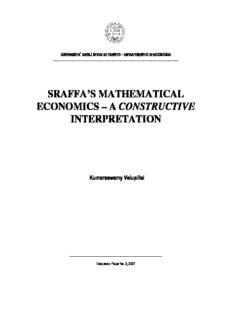
sraffa's mathematical economics – a constructive interpretation
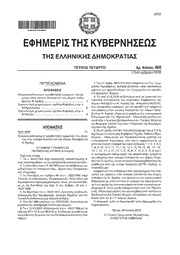
Greek Government Gazette: Part 4, 2005 no. 906
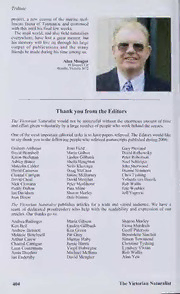
Thank You from the Editors

Lauter Gründe, warum die Welt ganz anders ist. Die Rätsel des Kosmos, die Grenzen des Wissens.

Bursa Ticaret ve Sanayi Odası

Só o Amor Liberta
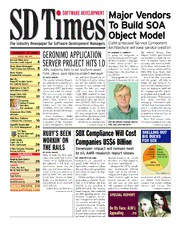
SD Times Issue 142
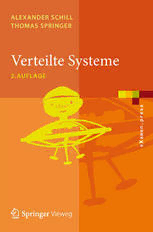
Verteilte Systeme: Grundlagen und Basistechnologien
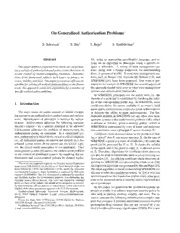
DTIC ADA449059: On Generalized Authorization Problems

CA--LIFORNIA INSTITUTE

Avertissements Agricoles - Grandes cultures - Centre - 1993 - 13

Grundlagenforschung zur Entwicklung von umweltfreundlichen Schlacken für das Elektro-Schlacke-Umschmelzverfahren
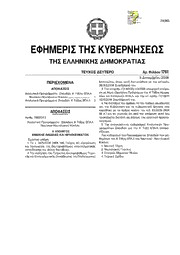
Greek Government Gazette: Part 2, 2006 no. 1761
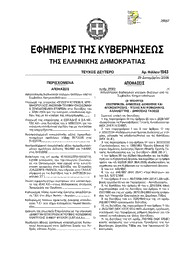
Greek Government Gazette: Part 2, 2006 no. 1943

Hurst’s the Heart

